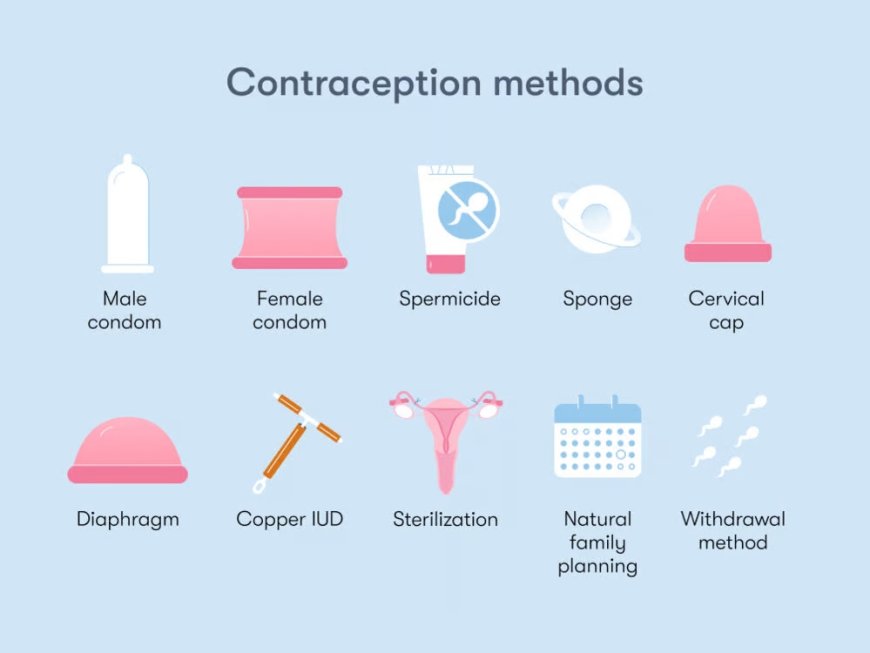Non-Hormonal Birth Control Options Explained
Discover non-hormonal birth control options such as copper IUDs, condoms, diaphragms, and spermicides. Learn how they work and their effectiveness.

Non-hormonal birth control options provide effective pregnancy prevention without the use of synthetic hormones. These methods are particularly appealing to individuals who prefer to avoid hormones due to health concerns, side effects, or personal choice. Unlike hormonal contraceptives, which alter the body's natural hormone balance to prevent pregnancy, non-hormonal methods rely on physical barriers, natural fertility awareness, or other mechanisms to reduce the chance of fertilization.
One of the most well-known non-hormonal methods is the copper intrauterine device (IUD). The copper IUD is a small, T-shaped device inserted into the uterus by a healthcare provider. It works by releasing copper ions that are toxic to sperm, creating an environment that prevents sperm from fertilizing an egg. The copper IUD can provide effective contraception for up to 10 years, making it a popular long-term option. It is hormone-free, which means it does not affect menstrual cycles, though some users may experience heavier periods or cramps initially.
Barrier methods are another important category of non-hormonal birth control. Condoms, for example, are widely used because they provide dual protection: they prevent pregnancy and reduce the risk of sexually transmitted infections (STIs). Male condoms are made of latex, polyurethane, or polyisoprene and act as a physical barrier to prevent sperm from entering the vagina. Female condoms are a similar option, providing a barrier inside the vagina. Both types must be used correctly and consistently to be effective.
Other barrier methods include diaphragms and cervical caps. These are soft, dome-shaped devices inserted into the vagina to cover the cervix and block sperm from entering the uterus. They are usually used with spermicide, a chemical that kills or immobilizes sperm, enhancing their effectiveness. Unlike condoms, diaphragms and cervical caps require fitting by a healthcare professional and must be inserted before intercourse. They offer control to the user but require proper use each time to prevent pregnancy.
Spermicides on their own are another non-hormonal method, available in gels, foams, creams, or suppositories. These chemicals destroy sperm, but when used alone, spermicides are less effective than other methods. However, when combined with barrier methods like condoms or diaphragms, they significantly increase contraceptive effectiveness.
Natural family planning (NFP) or fertility awareness-based methods (FABMs) are non-hormonal approaches that involve tracking a woman's fertility signals to determine when she is most likely to conceive. By monitoring basal body temperature, cervical mucus consistency, and menstrual cycle patterns, individuals can identify fertile windows and avoid intercourse or use barrier methods during those times. While NFP can be effective with diligent tracking and commitment, it requires education, practice, and consistency, making it less reliable for those with irregular cycles or inconsistent routines.
Withdrawal, also known as the "pull-out method," is another non-hormonal method where the male partner withdraws his penis before ejaculation to prevent sperm from entering the vagina. While easy to use and requiring no devices, withdrawal has a higher failure rate compared to other methods due to the possibility of pre-ejaculate fluid containing sperm and difficulties with timing.
Sterilization procedures such as tubal ligation for women or vasectomy for men are permanent, non-hormonal contraceptive options. These surgical methods block or seal the reproductive tubes to prevent the meeting of sperm and egg. Sterilization is highly effective but intended for individuals or couples who do not wish to have children in the future.
Choosing the right non-hormonal birth control method depends on individual preferences, health considerations, lifestyle, and comfort with the method. It’s important to consider factors such as convenience, effectiveness, protection against STIs, side effects, and whether the method is reversible.
Non-hormonal options generally do not interfere with natural hormone levels or menstrual cycles, which is a significant advantage for those who experience negative side effects from hormonal contraceptives. They also offer choices for individuals who cannot or prefer not to use hormones due to medical conditions like blood clots, certain cancers, or migraines.
While non-hormonal methods are safe and effective for many people, they do require proper and consistent use to maximize effectiveness. For example, barrier methods like condoms and diaphragms must be used correctly every time to reduce pregnancy risk. Natural methods require education, diligence, and sometimes partner cooperation to be reliable.
Healthcare providers can help individuals understand and choose the best non-hormonal option based on their medical history and lifestyle. It’s also important to remember that only condoms provide protection against sexually transmitted infections, so combining methods may sometimes be recommended.
In summary, non-hormonal birth control offers a wide range of choices for individuals seeking hormone-free contraception. From long-lasting copper IUDs and physical barriers like condoms and diaphragms to fertility awareness and permanent sterilization, these methods provide effective pregnancy prevention tailored to diverse needs and preferences. With proper use and informed decision-making, non-hormonal contraceptives can help people take control of their reproductive health safely and confidently.











